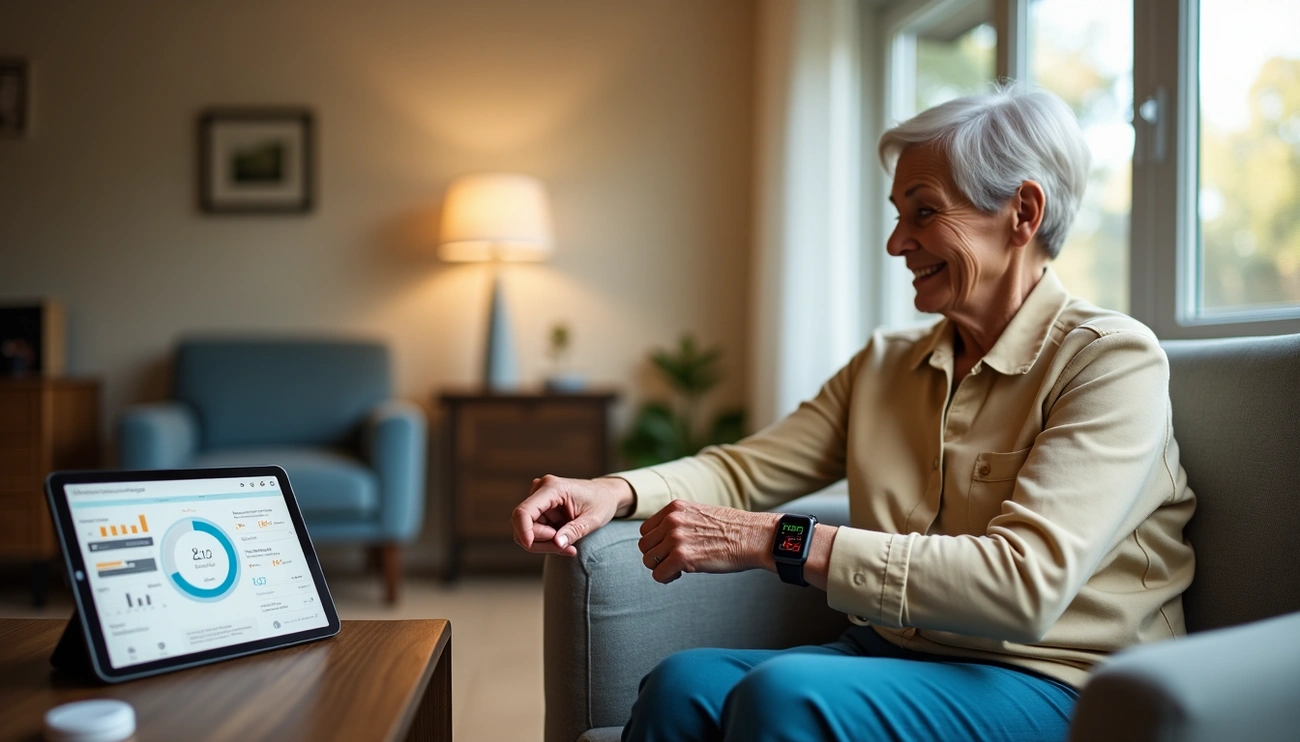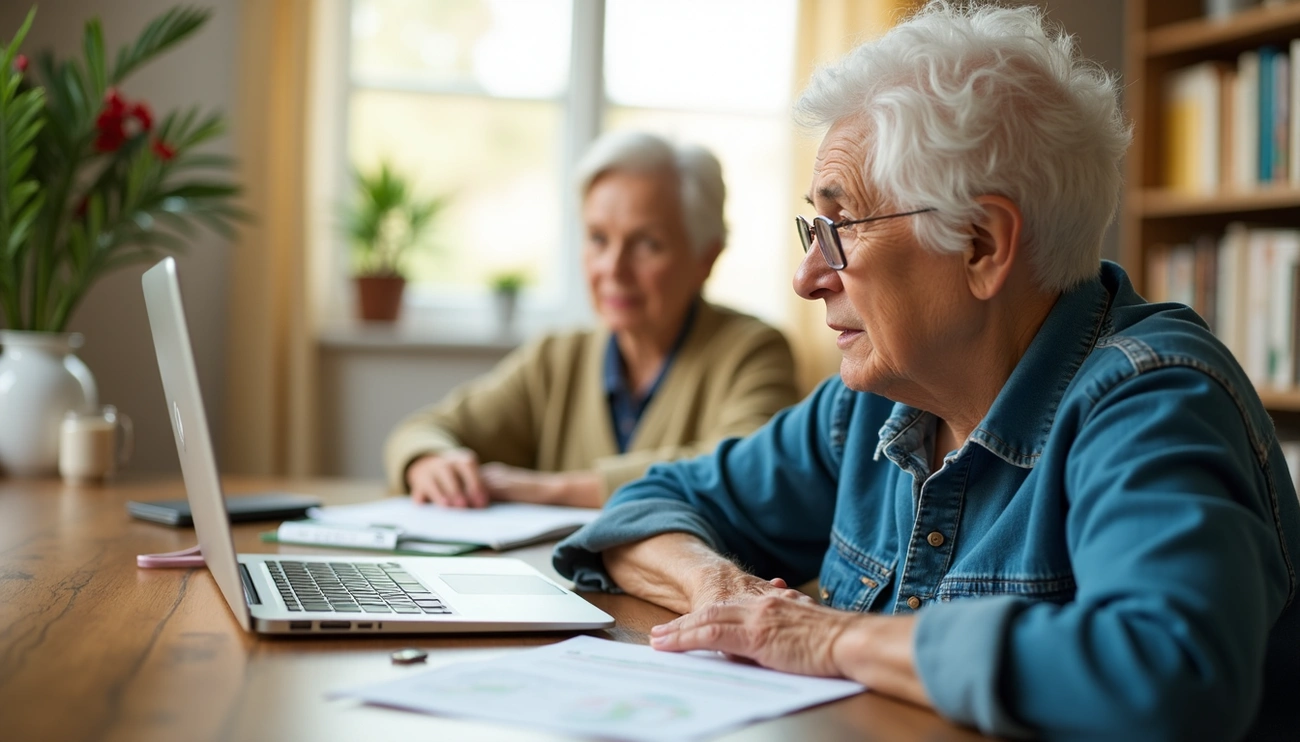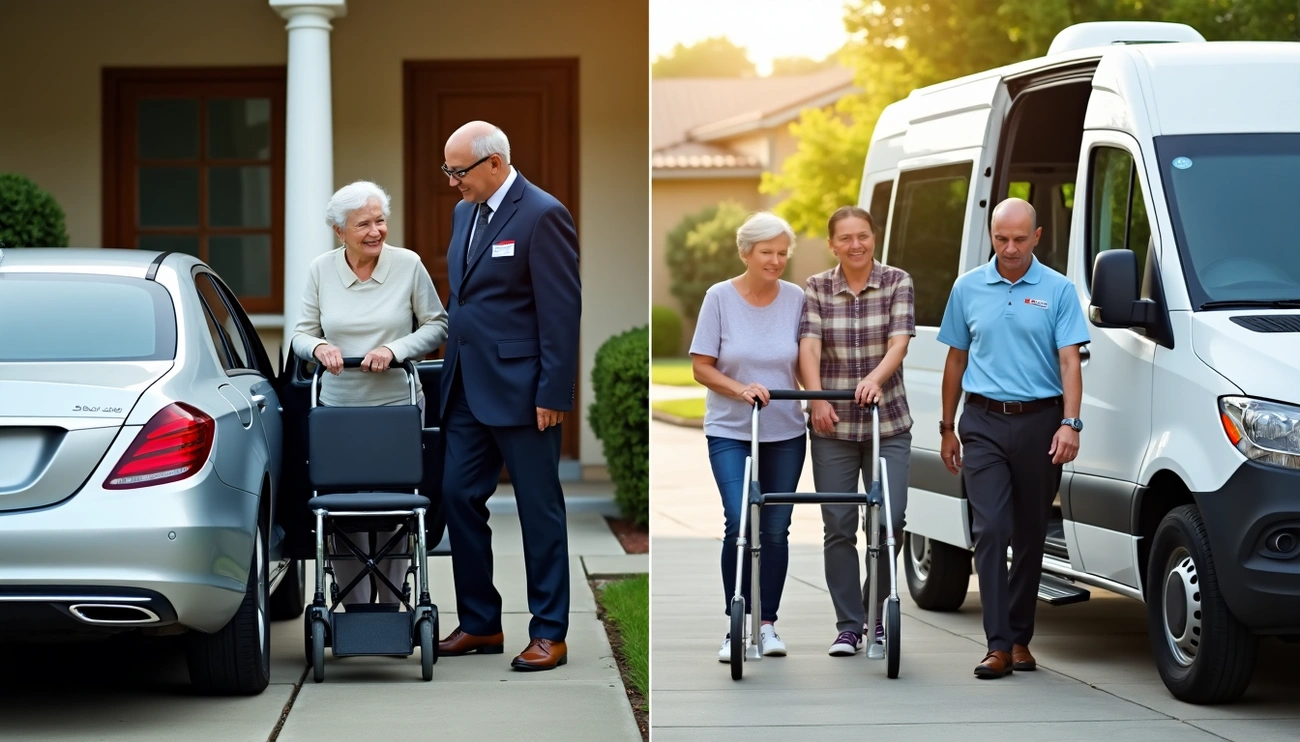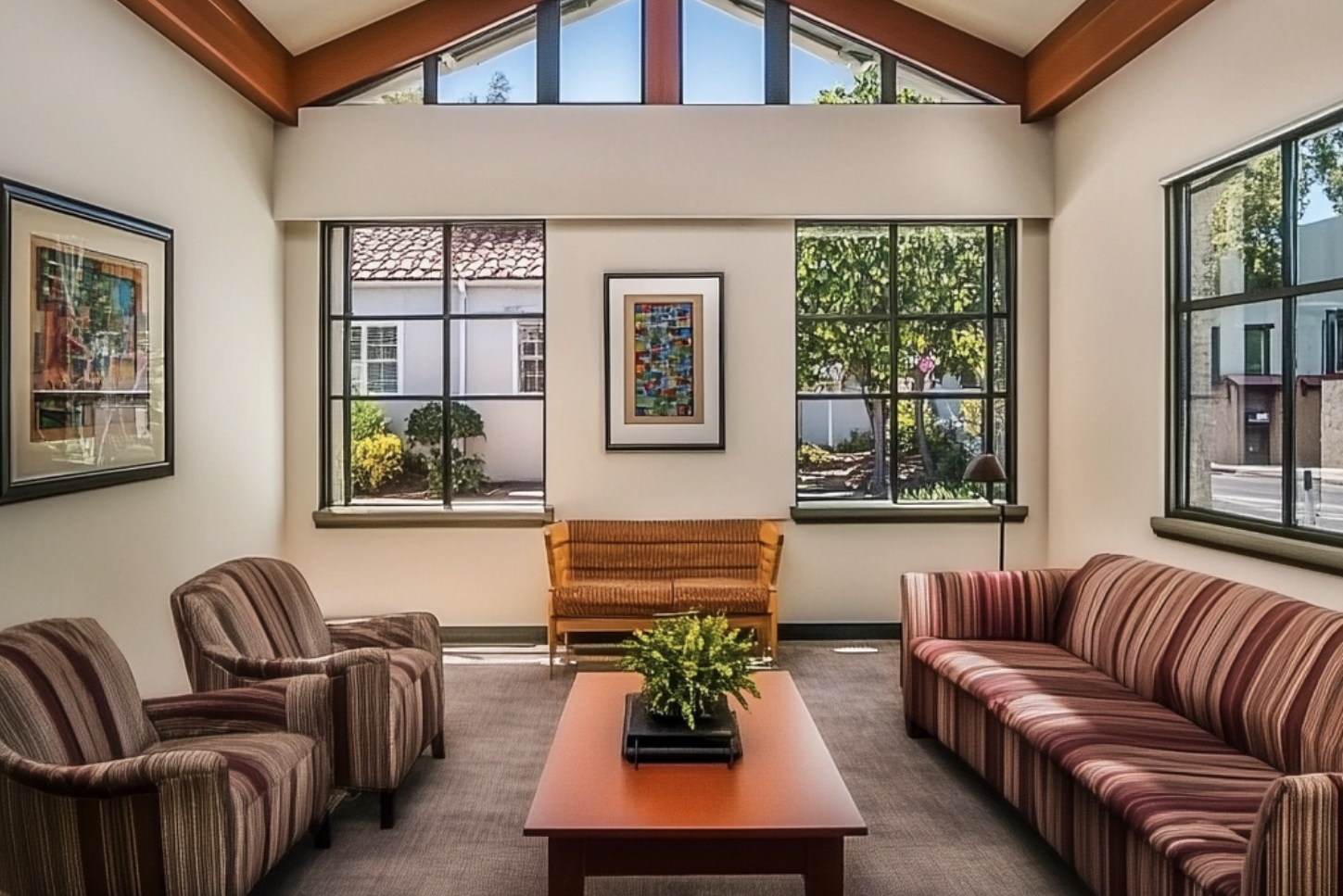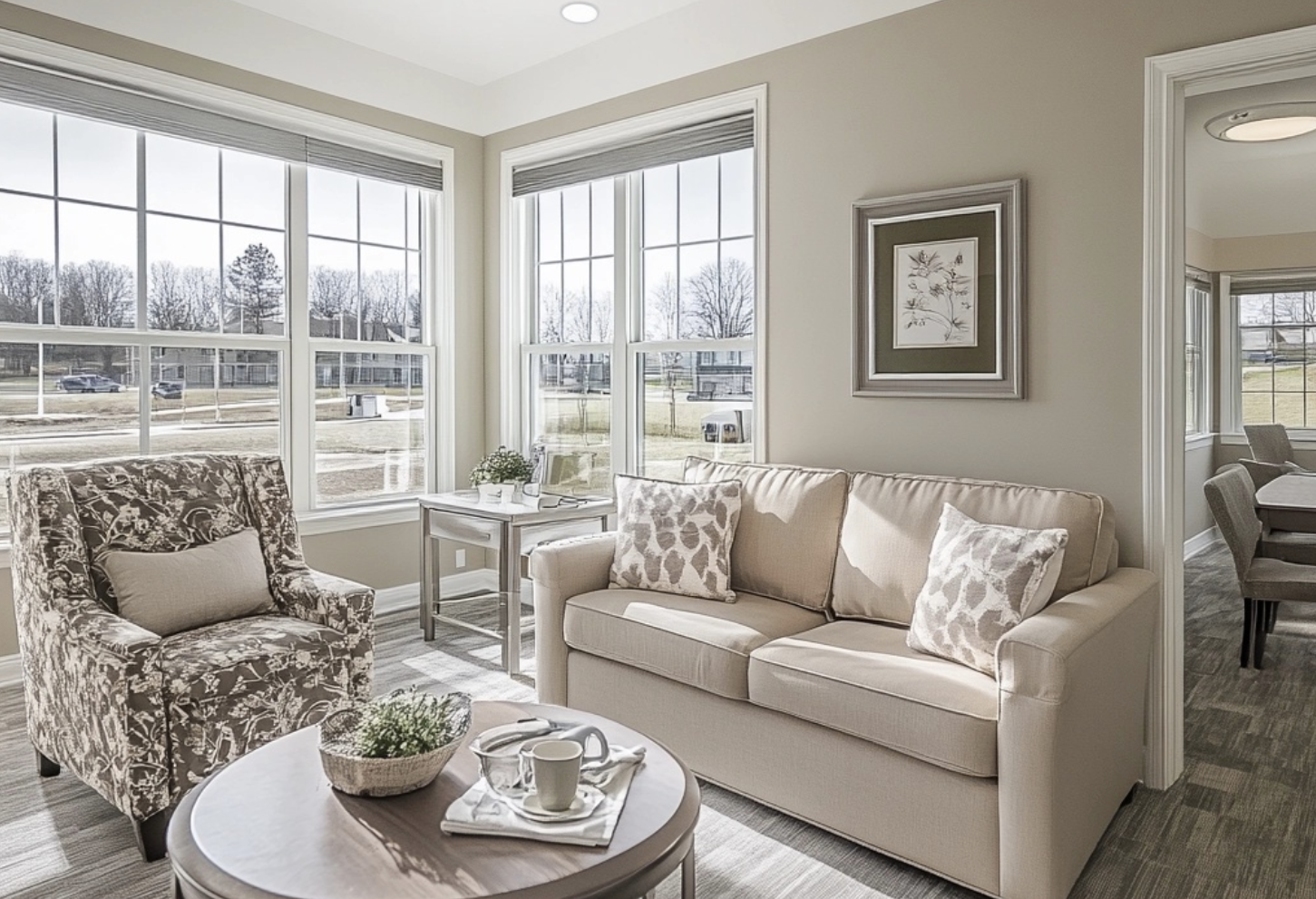earable devices in senior care technology reduce hospital readmissions for elderly patients by 40% through continuous monitoring and early detection of potential health issues. Nearly 90% of Americans over 50 now own smartphones, significantly expanding social connectivity options for older adults.
Smart home systems for elderly care create safer living environments by automatically managing medication reminders and fall detection. Telehealth solutions cut healthcare costs by up to 30% by reducing hospital visits and emergency room trips. Internet usage among seniors has grown dramatically from 14% in 2000 to 67% in 2020, changing how older adults interact with technology. Motion sensors now identify unusual patterns in seniors’ movements, while AI systems analyze health data to spot early warning signs of medical problems.
This article examines how sensor technology is changing care for the aging population. Automated lighting systems reduce fall risks by 30% in homes with proper installation. Robotic companions provide both practical assistance and social interaction for isolated seniors. These technological advances give older adults more opportunities to age safely and independently while maintaining their dignity.
Smart Sensors in Health Monitoring Devices
Smart sensors have changed how health monitoring works for seniors. These devices track health data continuously, allowing for early intervention when problems arise. The National Institute on Aging reports these technologies significantly improve outcomes for elderly patients with chronic conditions.
Heart Rate and Blood Pressure Tracking with Wearables
Wearable devices now monitor vital health metrics including heart rate, blood oxygen levels, body temperature, physical activity, and blood pressure. Seniors with cardiovascular conditions benefit from real-time measurements that provide clear insights into their health status.
Newer Apple Watch models include built-in ECG monitors delivering readings in just 30 seconds. KardiaMobile offers FDA-cleared personal EKGs that capture readings in 30 seconds without wires, patches, or gels. Users can share these readings instantly with physicians through smartphone apps.
Blood pressure monitoring has advanced with devices like Withings smart monitors. These upper arm cuffs, developed with cardiologists and clinically validated, provide medically accurate readings that automatically sync to health applications. BPM Core monitors combine blood pressure readings with digital stethoscope capabilities to detect valvular heart diseases and ECG functions to identify atrial fibrillation.
Fall Detection Using Accelerometers and Gyroscopes
Falls pose a major threat to seniors’ health and independence. Most fall prevention and detection tools monitor motor activity using one or several sensors. These sensors convert physical movements into digital data for analysis.
Fall detection systems use two main approaches:
- Wearable sensors – Watches, pendants, or clothing attachments that detect changes in acceleration, motion planes, or impact
- Non-wearable sensors – Environmental systems including cameras, motion sensors, microphones and floor sensors
Wearable sensors prove more effective than non-wearable options because they detect acceleration changes with high accuracy and work in any location. The most advanced systems combine multiple sensor types for better monitoring.
Studies show high accuracy rates for properly positioned sensors. Trunk-mounted devices (chest, waist, thorax) showed median sensitivity of 97.5% and specificity of 96.9% in fall detection. Systems using multiple sensors achieved slightly lower sensitivity at 93.4% but higher specificity at 99.8%.
Sleep Pattern Analysis for Early Health Warnings
Sleep monitoring represents another key application of sensor technology in senior care. Wearable devices using motion and temperature sensors make sleep monitoring accessible, providing data that indicates potential health problems.
Sleep quality issues increase with age and dementia. Poor sleep predicts worse cognitive function in older adults, including those with dementia. Through ongoing monitoring, researchers have identified specific sleep patterns that correlate with health problems.
A study analyzing over 6,000 nights of measured sleep in community-dwelling older adults found body movements in bed—measured by toss-and-turn events—was the most predictive sleep parameter for health issues. Cases with more than 200 toss-and-turn events per night correlated with problems including heart failure, hypertension, abdominal tumors, seasonal flu, gastrointestinal issues, and urinary tract infections.
Sleep data comes from various sources, from wrist-worn actigraphy devices to pressure sensors placed under mattresses. These systems track parameters like total sleep time, wake periods, and sleep efficiency—providing early warnings that help prevent serious health complications.
Enhancing Home Safety with Smart Environmental Sensors
Environmental safety at home forms a critical component of independent living for seniors. Nearly 45% of women aged 75+ live alone, making smart environmental sensors essential tools in senior care technology that provide both safety and peace of mind.
Motion Sensors for Nighttime Navigation
Nighttime poses particular challenges for elderly residents. Motion sensors detect movement and activate appropriate responses using two main technologies:
- Passive Infrared (PIR) Sensors: These pick up changes in infrared radiation (heat), triggering when a person moves within their field of view
- Microwave Sensors: Similar to radar, these emit microwave radiation and analyze reflected waves, activating when movement disrupts the pattern
Stand-alone motion sensors with alarms alert caregivers to nighttime wandering without startling seniors themselves. Some systems include two-way intercoms allowing caregivers to speak to seniors remotely, potentially stopping unsafe movement before it becomes dangerous.
Motion-activated lighting systems automatically illuminate pathways to bathrooms and other common nighttime destinations, significantly reducing fall risks. About 24% of people 65 and older now have home security systems, and 34% own at least one smart home device.
Smoke and Gas Detection with Real-Time Alerts
Smart smoke detectors elevate home safety beyond traditional alarms. Older adults are 2.5 times more likely to die in fires than the general population, making these devices crucial protection tools.
The most advanced smoke detectors feature voice alerts that precede sirens, stating which room contains the danger. This gives seniors time to verify whether there’s an actual emergency or merely burnt toast. These smart systems can send smartphone notifications to up to nine contacts, ensuring family members or caregivers can respond promptly regardless of location.
Natural gas detectors provide early warnings for potentially lethal gas leaks, detecting abnormal levels before they reach dangerous concentrations. Through integration with smart home elderly care systems, these detectors can notify emergency services automatically, even if the senior cannot do so themselves.
Carbon monoxide monitors protect against this odorless, colorless gas that proves particularly dangerous for seniors. Upon detecting elevated levels, smart monitors simultaneously trigger in-home alarms and send mobile alerts to designated contacts.
Smart Thermostats for Temperature Regulation
Temperature control remains essential for senior safety and comfort. Smart thermostats help prevent both hypothermia and hyperthermia by maintaining consistent, appropriate indoor temperatures.
The latest technology for caregivers includes thermostats with remote monitoring capabilities, allowing family members to ensure proper heating and cooling from anywhere. The Google Nest Learning Thermostat can interact with smart smoke detectors to automatically shut down HVAC systems during fire events, potentially reducing smoke damage.
Temperature sensors identify dangerous temperature extremes. Caregivers place these sensors in bedrooms to constantly monitor conditions and receive alerts when temperatures exceed safe parameters.
Energy Star-certified smart thermostats reduce annual heating and cooling bills by at least 8%. Some manufacturers claim savings up to 26% for certain homes. Beyond cost considerations, these systems provide an additional avenue for monitoring senior well-being, especially for those living separately from their caregivers.
Through these environmental monitoring tools, senior care innovation continues to expand possibilities for safe, independent living throughout the aging process.
Medication Management Through Sensor-Enabled Dispensers
Medication management remains a critical challenge for seniors, with 40% of older adults living with memory impairment. Sensor-enabled dispensers now help maintain precise medication schedules while keeping caregivers informed through automated alerts and monitoring.
Automated Pill Dispensers with Missed Dose Alerts
Automated pill dispensers have evolved beyond simple compartments into sophisticated devices that secure, organize, and dispense medications at programmed times. These devices emit audible alarms, flash lights for the hearing impaired, and even make phone calls if doses are missed.
Devices like Hero can store up to 90 days’ worth of 10 different medications, ensuring correct dosing at scheduled times. Smart dispensers reduce missed doses through scheduled reminders that provide structure for seniors with memory challenges. Most units feature tamper-resistant designs with lockable compartments to prevent accidental double-dosing.
One user reported about their medication dispenser: “It is functioning as advertised and has been a great help. Haven’t missed a morning or afternoon pill”.
Integration with Caregiver Dashboards
Advanced medication systems connect to monitoring dashboards accessible through smartphones or web portals. If medications aren’t taken within the scheduled timeframe, caregivers receive immediate alerts via text messages, email, or phone calls. Some systems maintain detailed medication logs, recording when doses were taken or missed. Many platforms provide compliance reports—daily, weekly, or monthly—documenting medication adherence patterns.
Through secure web portals, caregivers can modify medication schedules, trigger early doses when needed, and change device settings without physically visiting the senior’s home.
Voice-Activated Reminders for Seniors with Cognitive Decline
Voice-activated reminder systems offer unique advantages for seniors experiencing cognitive decline. These systems use familiar voices to improve compliance in smart home elderly care environments.
Family members can record personalized reminders like “It’s time to take two red pills and one white pill” that play at specific times. This technology benefits individuals with dementia, as one caregiver stated: “The flashing light is great and the alert sound isn’t too screechy. I’m glad I ordered it!”
Voice-controlled systems respond to simple commands such as “what day is it” or “today’s reminders,” allowing seniors to interact without navigating complex interfaces. Medication adherence improves while preserving dignity and independence through these technological solutions.
Remote Monitoring and Alerts for Caregivers
Remote care systems extend caregivers’ reach beyond physical presence, creating safety nets for independently living seniors. These monitoring technologies provide visibility into daily routines from virtually anywhere.
Real-Time Activity Tracking via IoT Platforms
IoT platforms have improved senior monitoring through continuous data collection and analysis. These systems track vital signs including heart rate, body temperature, and blood oxygenation through wearable devices, sending real-time data to caregivers’ smartphones. Physicians and family members can access this information simultaneously, enabling quick decisions about health status.
Automated monitoring systems detect concerning patterns early. IoT platforms analyze activity data to identify potential health issues before they become serious—when motion sensors detect unusual inactivity, alerts are immediately sent to designated contacts. This approach has proven valuable in detecting early warning signs of health changes among elderly populations.
Geofencing and Location-Based Alerts for Wandering Prevention
Geofencing technology creates virtual boundaries around safe areas, sending instant notifications when seniors cross predefined perimeters. This feature proves particularly valuable for individuals with cognitive conditions like Alzheimer’s or dementia who may wander.
GPS-enabled medical alert devices offer location tracking alongside emergency communication functions. Family members can monitor their loved ones’ locations through smartphone apps that display real-time positioning information. One caregiver noted about their GPS tracking system: “I could see exactly where my grandma was at any given time”.
These systems typically include:
- Real-time location monitoring through smartphone apps
- Customizable safe zone boundaries
- Instant notifications when boundaries are crossed
- SOS buttons for emergency assistance
Data Sharing with Healthcare Providers for Proactive Care
Smart home elderly care systems facilitate information exchange between families and healthcare providers. Through integrated platforms, caregivers can share collected health data, enabling healthcare professionals to make informed treatment adjustments.
Studies show that providing hospital discharge records to community caregivers helps initiate preventative measures that reduce hospital readmission rates. This data sharing enables collaborative care planning between providers and enhances communication for promoting high-quality community care.
Remote monitoring platforms benefit both seniors and their care networks. While integrating these technologies requires careful consideration of privacy concerns, the practical advantages remain substantial—primarily allowing seniors to maintain independence alongside enhanced safety.
Challenges in Sensor-Based Elder Care
Despite their benefits, sensor-based systems face several obstacles to widespread adoption. Privacy issues, training requirements, and balancing autonomy with safety remain significant hurdles for elder care technology.
Privacy Concerns During Continuous Monitoring
Privacy represents a major ethical issue with smart sensors. Studies show privacy concerns appeared in 58 articles examining elder care technology. Older adults often prioritize safety over privacy, frequently willing to trade personal information for the ability to live independently.
The level of intrusion varies widely between different technologies. Data collection ranges from 24/7 video surveillance to simple daily heart rate measurements. How collected information might be shared causes greater concern—60% of participants in one study reported privacy or security worries, with these concerns growing after using the systems for one year.
Training Requirements for Sensor-Enabled Devices
Proper training is essential for effective use of monitoring technology. Without adequate education, seniors often generate inaccurate data and become frustrated with the systems. Users need comprehensive understanding of both device operation and limitations.
Trust deficits, lack of technological experience, and language barriers create significant adoption challenges. User-friendly interfaces with customization options improve accessibility, according to 35 different studies. Learning about devices from healthcare professionals helps overcome resistance: “If someone can guide you through it, once you start using them you would probably use it”.
Balancing Autonomy with Safety
The tension between providing assistance and maintaining independence creates difficult tradeoffs. Seniors prefer having control over when technology operates—devices should be easily activated or deactivated based on personal preference. Unobtrusive sensors that don’t identify individuals directly receive better acceptance than more invasive monitoring systems.
Cost remains a substantial barrier to adoption. With the 2017 median annual income for older adults at just $24,224, many sensor-based systems are financially out of reach, especially considering annual healthcare costs for individuals with chronic conditions can reach $13,230. Technology serving dual purposes—both monitoring activities and facilitating communication—typically receives more positive responses from seniors.
Conclusion
Sensor technology for senior care has created more personalized and effective aging solutions while preserving independence that older adults value. Health monitoring devices that track heart rate, detect falls, and analyze sleep patterns have changed preventative care approaches. Environmental sensors provide safer living spaces through automated lighting and smoke detection without disrupting daily routines.
Medication management systems balance assistance with autonomy effectively. These devices ensure proper medication adherence without constant supervision. Remote monitoring platforms connect family members with healthcare providers across distances, enabling timely interventions when necessary.
Several challenges remain unsolved despite these advances. Privacy concerns, technology adoption barriers, and cost considerations limit widespread implementation. The benefits outweigh drawbacks for many families, though. Fall detection systems show median sensitivity rates of 97.5% when properly positioned, potentially saving many lives.
Senior care technology will likely become more sophisticated and less intrusive as sensors advance. Smart systems will adapt to individual preferences without compromising dignity. These technologies cannot replace human connection but provide tools that help seniors age safely in familiar environments while giving caregivers peace of mind. Sensor technology improvements have only just begun—and older adults stand to benefit most from future developments.
FAQs
Q1. What are some innovative technologies designed specifically for seniors? Smart sensors in wearable devices now offer continuous health monitoring, including heart rate tracking, fall detection, and sleep pattern analysis. Additionally, environmental sensors enhance home safety through automated lighting, smoke detection, and temperature regulation, all tailored to seniors’ needs.
Q2. How can technology address the caregiver shortage for seniors? Remote monitoring and alert systems allow caregivers to track seniors’ activities and health status from a distance. These technologies, including IoT platforms and GPS-enabled devices, enable real-time activity tracking and location-based alerts, reducing the need for constant in-person supervision.
Q3. What impact will technology have on aging in the near future? Technology is set to redefine aging by providing seniors with greater control over their health and independence. Advanced sensor-based systems will offer more personalized care solutions, enabling early detection of health issues and facilitating proactive interventions, ultimately improving quality of life for seniors.
Q4. How do smart medication management systems benefit the elderly? Sensor-enabled medication dispensers help seniors maintain precise medication schedules by providing automated reminders, missed dose alerts, and secure storage. These systems can be integrated with caregiver dashboards, allowing remote monitoring and adjustment of medication routines.
Q5. What challenges exist in implementing sensor-based elder care technology? Key challenges include addressing privacy concerns related to continuous monitoring, providing adequate training for seniors to use new devices effectively, and balancing the need for safety with maintaining personal autonomy. Additionally, the cost of advanced care technologies can be a barrier for many seniors.
